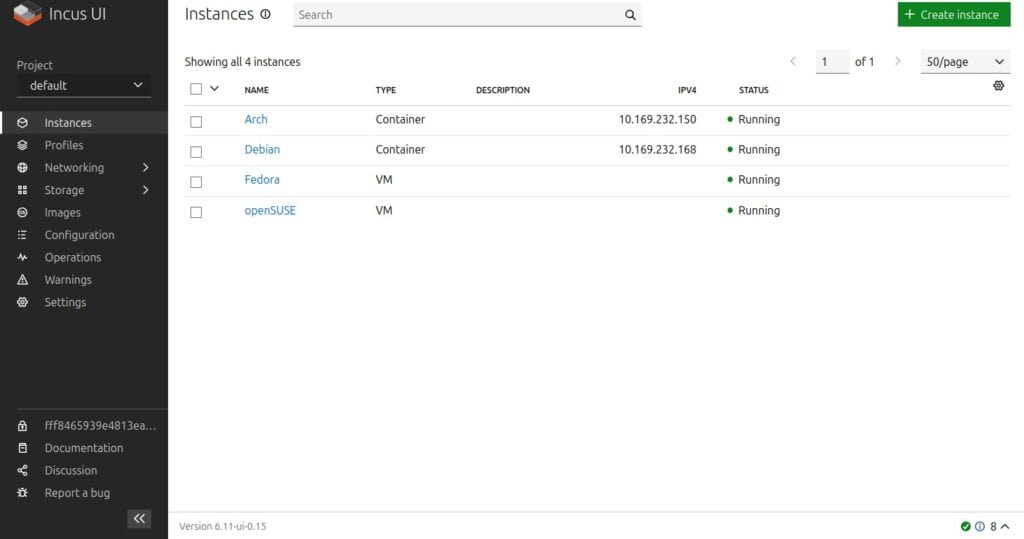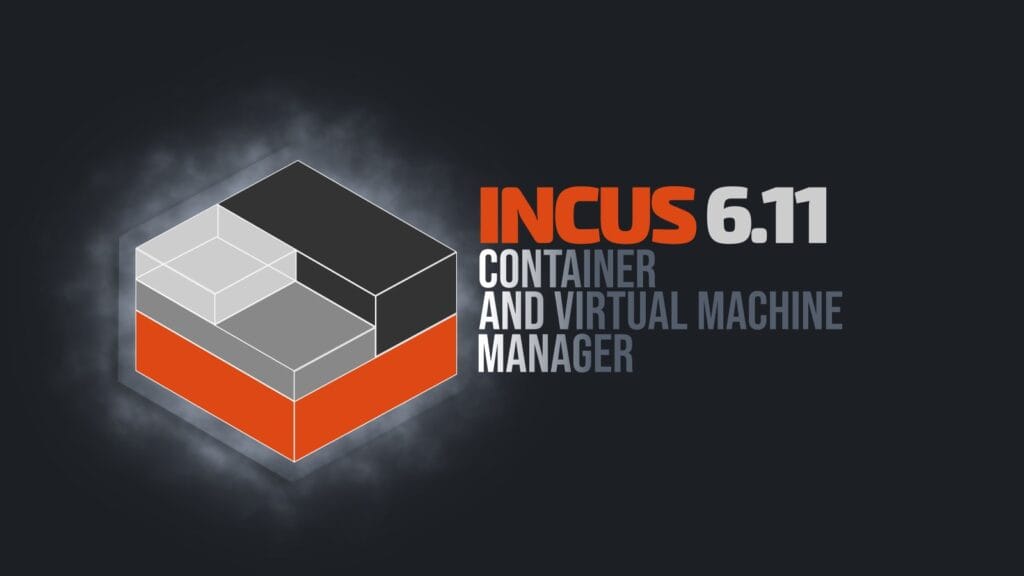The Incus team has just announced the release of version 6.11 of its container & virtual machine manager, which includes a wide range of improvements. One of the most striking features is its initial support for Linstor, an open-source software designed to manage block storage devices for large Linux server clusters, as an alternative to the tried-and-true Ceph.
On the networking side, many probably don’t know that Incus (and LXC) have traditionally used the 00:16:3e MAC address range—originally allocated by the Xen project. To avoid confusion and provide clearer identification, the project has obtained a new dedicated range, 10:66:6a, specifically intended for LXC and Incus instances.
Moreover, Incus 6.11 introduces a new option to attach network interfaces through USB rather than the default VirtIO device. By setting io.bus=usb, the network card is exposed to the VM as a generic USB device, which can be particularly helpful when dealing with legacy guest operating systems that lack certain drivers.

Similarly, disks can now be attached to VMs as USB mass storage devices, thanks to the same io.bus=usb configuration. This is a handy feature for anyone needing to run VMs that automatically detect a USB drive upon insertion or for those who want the convenience of a standardized approach to removable storage within the guest OS.
Another noteworthy addition in Incus 6.11 is the ability to configure OCI containers’ entry points, enabling more granular control of containerized applications. This is achieved through the following new configuration keys:
oci.entrypointoci.cwdoci.uidoci.gid
Once containers are created, these values can be adjusted as needed, offering a straightforward method to tune how an OCI container runs. Moreover, Incus 6.11 now allows regular users in OCI containers to send ICMP packets (ping) and bind to low ports.
Administrators seeking deeper insights into CPU usage will welcome the newly added allocated_time value in the instance state API. When combined with standard usage metrics, operators can quickly calculate CPU usage percentages by measuring nanoseconds of CPU time per second that an instance is authorized to consume.
For those who need pinpoint control over DNS resolution, Incus 6.11 unveils a new dns.nameservers configuration option for both bridge and OVN networks. This lets administrators specify exactly which DNS servers should be used, bypassing or supplementing local resolvers if desired.
In addition, the new release introduces a new ipv4.dhcp.routes configuration key, allowing administrators to advertise additional routes over DHCP on both bridge and OVN networks, enhancing flexibility in more complex network topologies.
Last but not least, the Incus 6.11 release offloads ACME (Let’s Encrypt) certificate handling to an external tool called lego. This means that any distribution packaging Incus will now need to list lego as a dependency, ensuring ACME features continue to function properly in production environments.
For more information about the Incus 6.11 container and virtual machine manager changes, visit the release announcement or check out the full changelog.
Users are encouraged to try out these new features by visiting the Incus online platform, which provides a hands-on experience with the latest version.
